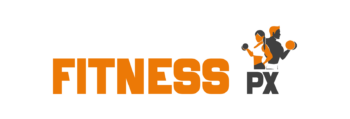What Does Bulking Entail? Recognizing the Phase of Muscle Building

In the world of bodybuilding and fitness, the phrase “bulking” refers to a particular stage of training that aims to increase muscular mass and strength. People purposefully consume more calories during this time than they burn, resulting in a caloric surplus that gives the body the energy it needs to grow muscle.
Here we discuss what does bulking mean in a bodybuilder’s life. The main objective of bulking is to increase muscle mass while reducing the amount of extra fat that accumulates on the body. To promote muscular growth, this period is often marked by rigorous resistance exercise and thoughtful diet.
Important Elements of Bulking
A good bulking phase involves a number of essential elements. First and foremost, diet is very important since building muscle requires ingesting more calories than one burns. But consuming more calories isn’t enough; the quality of those calories counts as well. It need a well-balanced diet high in protein, carbs, and good fats to promote muscle development and repair. Particularly important for muscle synthesis and recuperation is protein; 1.2 to 2.2 grams of protein per kilogram of body weight are normally advised consumption amounts.
Resistance Training’s Significance
In order to promote muscular development during the bulking period, resistance exercise is essential. Muscular-building exercises that focus on large muscular groups, such bench presses, squats, deadlifts, and rows, are very beneficial. To promote ongoing muscular adaptation, progressive overload which is progressively increasing the weight carried over time is essential. People may trigger the physiological reactions required for muscular growth by subjecting their muscles to progressively greater weights. To maximize muscular growth during the bulking phase, a well-designed resistance training program with an emphasis on compound exercises and sufficient volume and intensity is required.
Tracking Development and Modifications
Throughout the bulking period, it is essential to regularly assess progress to make sure that the required muscular development is taking place. Metrics like strength levels, body dimensions, and body weight may be tracked to provide important information into how well the bulking program is working. Adjustments can be required if development pauses or if there is an excessive increase in body fat. To better meet personal requirements and objectives, this may include shifting macronutrient ratios, calorie consumption, or training program modifications. It’s crucial to make well-informed modifications based on progress monitoring in order to maximize outcomes and prevent any setbacks.
Conclusion
A deliberate training phase called “bulking” aims to build larger, stronger muscles by combining physical training with smart eating. People may enhance their muscular growth by purposefully ingesting excess calories and doing intense resistance exercise. This will induce muscle hypertrophy. During the bulking phase, outcomes must be optimized by keeping an eye on developments and adjusting as necessary. After bulking, moving into a cutting phase refines the body by eliminating extra body fat while maintaining muscle mass.




